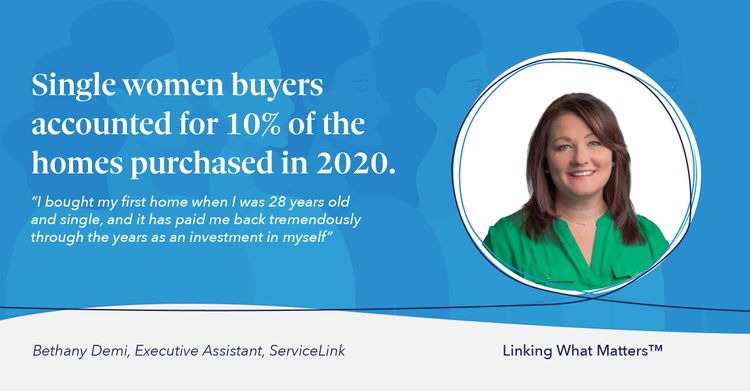Market conditions and evolving consumer behaviors are prompting some community banks and credit unions to consider a centralized, or consumer direct, mortgage fulfillment model.
The real estate market’s ongoing surge of mortgage activity is pressing many community banks and credit unions to seek new routes to efficiency, consistency and profitability. Many have moved, or are considering moving, to a centralized model, consolidating their mortgage loan functions under one roof. Others believe that their existing decentralized model can better serve their customers or members.
“This continues to be an institution-by-institution decision,” says Lone Star Credit Union CEO Becky Reed. “However, I think the larger the institution gets, the more centralization makes sense. We have to follow many federal regulations regarding fairness and equity; consistent underwriting — all in one department answering to one leader — makes for easier regulation follow-up and compliance.”
Leslie Attebery, who is currently building a centralized team as director of Mortgage Lending at Resource One Credit Union, has through her career led teams in both centralized and decentralized environments. “I have always preferred a centralized model,” she says. “We can process loans much more quickly, and we all get the same message from the same person — whether a processor, an underwriter or a manager — at the same time.”
Consumer behavior trends seem to bear out the case for centralization, as Gen X, Y (millennial) and Z homebuyers often prefer an electronic mortgage experience, particularly as the COVID-19 pandemic has changed attitudes about face-to-face interaction. The branch experience is no longer the essential component it once was for some borrowers, as convenience and speed take center stage.
Here are some of the potential advantages of the centralized model that are prompting a fresh look:
Greater control
Reed, who joined Lone Star Credit Union in 2014, shifted the organization to a centralized mortgage lending model in 2015, largely because she had found through her work at other credit unions that centralization offered greater control, thus yielding higher-quality loans.
“People in customer service roles want to please every member they support. They don’t like to tell the member ‘no.’ And while that service-oriented nature is highly valued on the retail side, underwriters need to be more analytical — focused solely on analyzing the risk associated with each loan and delivering an objective decision,” Reed says. “We saw an almost immediate improvement in loan quality when we moved underwriting out of the branches. It has resulted in consistently lower delinquencies and charge-offs.”
Heightened efficiency and accuracy
Assigning employees to specialized, clearly defined roles under the direction of a central manager enables organizations to streamline their processes and bolster productivity and consistency. Given the opportunity to excel in their respective areas of strength, employees can become increasingly efficient, while minimizing potentially costly errors.
“Unencumbered by member service activities, our underwriters can each review 15 or more applications an hour, depending on the level of analysis required,” shares Reed. “Having a team focused solely on underwriting enables us to decision, and ultimately book, more loans.”
Lenders may benefit from employee specialization in other areas, too, including top-line sales. Freeing customer-facing employees from the analytical aspects of the lending process may afford them more time to discuss additional products and services with customers or members.
Attebery adds Resource One’s centralized model helps her make more efficient use of her own time, as she manages the mortgage process. “When I oversaw teams in a decentralized structure, where there was not a centralized processing center, I spent a substantial amount of time managing separate teams,” she recalls. “Now I can talk to one team and say, ‘Here’s our new plan.’ Because we’re all part of the same group, we can work through any questions together, right then and there.”
Increased profitability
One of the primary advantages of centralizing is its potential to improve the bottom line, proponents say. Greater efficiency and productivity, fewer errors, increased specialization of employees and lower training costs (as compared to training numerous employees in multiple areas of responsibility) can all contribute to profitability. And, unlike across-the-board cost-cutting efforts, loan quality is not compromised in any way; in fact, as previously noted, centralization is more likely to lead to higher-quality loans.
Improved customer/member experience
Any time a lender can make the borrowing process easier for a member or customer, that borrower’s experience is enhanced. Getting their loan approved and funded more quickly is, of course, central to their positive experience, but the little things count, too, as lenders strive to build trust and loyalty among their clientele.
For example, when a borrower calls a branch for information related to their loan, they may have to leave a message or wait for their loan officer to find an answer to their question. A call to a loan processing center gives them immediate access to answers.
“Our representative can put the member briefly on hold, ask the underwriter or servicer the question, and get right back on the phone with their answer,” Attebery says.
Technology has the power to improve the consumer experience significantly as well, both behind the scenes and in customer-facing applications. “In addition to using automated underwriting tools, we moved our loan application process online when we centralized,” Reed says. “Now a member can apply for a new account or loan on any device. If they come into the credit union to talk to an employee, or they’re on the phone with an employee, the same platform is used, just from a credit union-facing user interface. Loan closings, documentation and workflow management are all handled electronically.” It all adds up to a more efficient process, leading to a positive borrower experience.
Reed advises, “If your employees are telling you that they’re buried in paperwork and don’t have time to focus on relationships, you may want to consider centralizing the underwriting. If efficiency is important to you and you’d like your member-facing people and your analytical people to be able to focus on doing what they do best, centralization may be the answer.”
While the benefits can be substantial, Attebery reiterates that the decision of whether to centralize or not depends on the lender’s size, perspective and clientele or membership. “I think it’s different for credit unions in that we tend to be more hands-on than other types of lenders. That leads to a mindset that, by decentralizing, you’re leaving a whole lot of camaraderie on the table.”
Ultimately, lenders and credit unions should balance the input of their employees and the unique needs of their market and their customer base to create operations and workflows that meet their needs.


